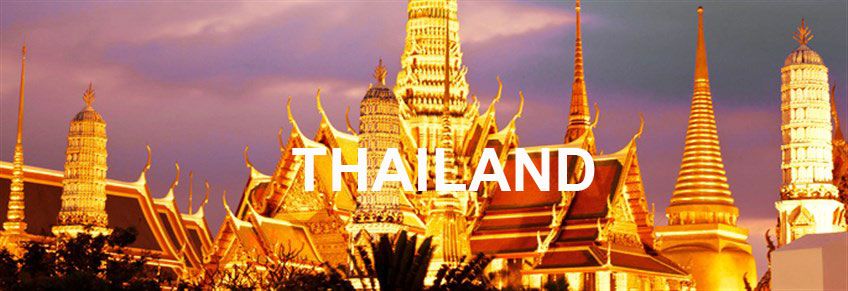
When looking back on Thailand’s history, the important period to look at goes back to the middle of the 7th Century. Prior to that there were few defined boundaries in South East Asia. One of the most important thing to remember is that Thailand has never been colonised. The British held India and Burma, the French all the other countries within what is now known as Indochina. Many people who book Indochina tour packages to understand the whole region will see the evidence of colonialism in the architecture for one. Not so in Thailand.The people are proud and hospitable as those booking a Thailand holiday are sure to find.
Nanchao Period
This dates from the middle of the 7th to the middle of the 13th Century. The original Thais were living in their kingdom in what are now parts of Southern China; Yunnan, Kwangsi and Canton. As people then travelled south into what is now the Central Region of Thailand they fell under the rule of the Khmer Empire and absorbed their culture. At the middle of the 13th Century they formed an independent state.
Sukhothai Period
From around 1250 for a century Thais gained independence from both the Khmer and the Mon kingdom. There was peace and an enlightened monarchy, the most famous of whom was King Ramkhamhaeng the Great. However,there were more powerful states around and in 1350 one gained control.
Ayutthaya Period
The Ayutthaya kingdom lasted for four centuries. The monarchy was no longer benevolent; they were absolute kings, influenced by Khmer culture and the Thais were directly under their control. Siam, as it was known in the 17th Century, began to look to the West but in 1767 Siam was defeated by the Burmese; their stay was short however and under a young general, Phya Taksin, the enemy was finally expelled. Ayutthaya is commonly included in Thailand travel packages.
Thon Buri Period
The General moved the Capital from Ayutthaya, preferring a coastal location for both defence and trade reasons. Thon Buri was its name and it was located on the banks of the Chao Phraya River. This was a brief period and when Phya Taksin died the current dynasty began; 1782.
Rattanakosin Period
General Chakri was the first king of the Chakri Dynasty; the ninth recently died after ruling for 70 years. The General, known as Rama I, ruled until 1809. He immediately moved the royal capital across the river to Bangkok and built the Grand Palace on the site where there were already impressive Buddhist buildings sure to be part of a Thailand travel itinerary that a good Thailand tour operator will arrange.
Subsequently there have been eight other kings, each known as Rama:
• II 1809 – 1824
• III 1824 – 1851 who looked to develop trade with China and contacts with the West
• IV 1851 – 1868 and the inspiration for the famous film and stage play ‘’The King & I’’ negotiated treaties with the West that avoided colonisation and reformed the economy.
• V 1869 – 1910 and also a reformer. He abolished slavery and improved public welfare.
• VI 1910 – 1925 during which compulsory education was introduced.
• VII 1925 – 1935 and during his reign the monarchy changed from absolute to constitutional. He abdicated.
• VIII 1935 – 1946 with the name of the Country changing from Siam to Thailand at the time when democratic government first began; 1939.
• VIIII 1946 – 2016. King Bhumibol Adulyadej, was King Rama IX and he has recently been succeeded by his son, the Crown Prince.
Thailand has not been without its political problems despite the stability of a single dynasty for almost 240 years.





